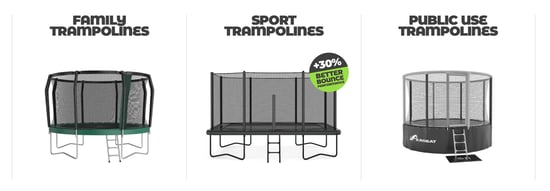Carefree jumping on a trampoline is definitely a source of fun for every individual, especially for children and teenagers. A bit less known is the fact that the use of trampolines is a highly effective therapy for children who face autism. What is the role of trampoline parks in this case?
Trampolines are the fun and healthy recreational choice
Jumping on high-quality trampolines is useful and fun for all children, including those with special needs. Modern sedentary lifestyles impact children negatively both physically and mentally.
It is highly recommended that children of all ages and physical capacities be offered a healthy way of spending free time and interesting sports activities within the framework of school or educational obligations. According to teacher and early childhood neurodevelopmental consultant Bindy Cummings, jumping and bouncing around is promoting blood flow and provide mental and physical stimulation in a safe environment. As both visual and auditory functions are directly governed by the vestibular system, bouncing aids the development of vision, visual-motor skills, hearing, and auditory-motor skills.
Interesting entertainment options and games inside various trampoline parks can have an extremely positive impact on the development of the child, their fitness, balance, and coordination.
For individuals with autism and for kids without any mental or physical obstacles, those fun jumping exercises can be a determining factor in the development of their brains.
What is it like to live with autism?
Autism spectrum disorders are thought to cause problems with social interaction, verbal as well as non-verbal communication, and recurring behavior.
Individuals who have been diagnosed with autism can function very well and are even academically above-average intelligent. However, they can face extremely difficult disorders that hamper them severely on a daily basis and thus disable them to live independently.
The spectrum of autism is very wide and has many symptoms. Because they are so different, we must develop a custom strategy and approach for each individual.
Children with autism are not very well aware of their movements. This means that they have problems understanding the feedback from their muscles, joints, and ligaments. They may be, for example, under-sensitive to touch or suffer from balance problems.
Children with normally functioning senses feel all stimuli while this perception can be very limited for autistic children. Their body does not understand the stimuli received during movement. They may also be over or under-sensitive to movement and balance, which means that they can be thrill seekers or need help with balance. Autistic children tend to react very negatively to stress and anxiety.
How can trampolines help with autism?
There are two types of therapy that can be performed on a trampoline or in trampoline parks. Working therapy covers physical and motor skills whereas physical therapy takes care of coordination, and enhances balance and muscle tone.
When a child is jumping on a trampoline, a recurring stimulation created when bouncing off the surface helps the body to read the impulses more easily since they would not be capable of interpreting them otherwise.
The jumping rhythm is extremely calming and helps the child align sensing systems. That is why we often find a small room trampoline in classrooms intended for children with autism. Pupils can use it any time and learn how to count jumps and monitor their direction.
With autistic children, the use of trampoline parks can also improve their social skills. It is typical for them to withdraw into their own world and find it more difficult to get in touch with their peers. In trampoline parks, they have a much better opportunity for interaction with other children. Also learning skills of the child can be greatly improved.
Autistic children often face learning difficulties. Learning through fun activities is therefore much more suitable for them. Trampoline parks are very useful as they make it possible for children to learn how to count, recognize objects using cards, and can partake in many other activities. Therefore, it is of great importance that proper equipment is used for children with autism.
What is the role of trampoline parks in this case?
Undoubtedly, children and teenagers are the primary target group of trampoline parks. Therefore, when planning an offer in a trampoline park, it is always good to think about connecting with schools, and about including physical education and school sports days in your offer.
However, it is not just about attracting new visitors and increasing the traffic of the trampoline park. Sometimes it is also good to think about those who need extra care, such as children with special needs. Sometimes it’s good to also do something for a better world we live in.

